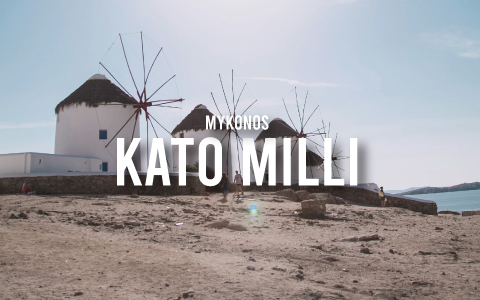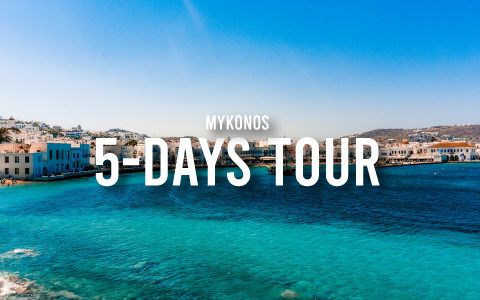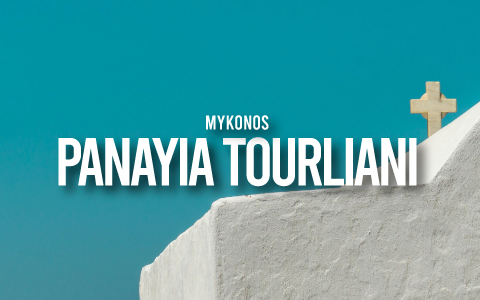
Exploring Kato Milli: The Iconic Windmills of Mykonos
The island of Mykonos is known for its glamorous nightlife, charming whitewashed houses and azure waters. It also has several iconic landmarks, such as the Armenistis Lighthouse and Kato Milli. The latter are impressive white windmills that stand proudly on the hillside, contrasting beautifully with the deep blue Aegean Sea.
What is Kato Milli?
Kato Milli translates to “Lower Windmills” in Greek, and refers to a row of traditional windmills that have stood on the outskirts of Mykonos Town (Chora) for centuries. While there were once numerous windmills scattered across the island, Kato Milli is the most famous collection, consisting of a group of five windmills perched on a hill overlooking the town and the nearby bay. With their unique cylindrical shape, whitewashed stone walls, and wooden thatched roofs they have become one of the most photographed spots in Mykonos, capturing the essence of the Cycladic island’s architecture.
A Glimpse into the History of Kato Milli
To fully appreciate Kato Milli, it’s important to understand the historical significance of windmills on Mykonos. During the 16th century, when the island was under Venetian rule, Mykonos became an important maritime hub in the Aegean Sea. Due to its prime location, it was a central point for trade between Europe and Asia, especially in wheat and barley, which were crucial commodities at the time. The island’s frequent winds made it an ideal location for wind-powered grain mills and the windmills soon became an essential part of Mykonos’ economy.
By the early 20th century, however, technological advancements led to the decline of windmill usage across Greece, including Mykonos. Many windmills fell into disrepair as steam-powered and later electric mills took over the industry. Fortunately, in the late 20th century, a revival of interest in preserving the island’s cultural heritage saw efforts to restore Kato Milli, ensuring that these historic structures would remain standing for future generations to admire.
Are the mills still working?
Though no longer operational, the windmills are now protected monuments and attract thousands of tourists each year who come to admire their timeless beauty, learn about their historical significance, and take in the breathtaking panoramic views that the location offers. Moreover, Kato Milli’s proximity to other popular attractions makes it an easy stop on any traveler’s itinerary. The area known as “Little Venice,” a district famous for its seaside houses with colorful balconies and lively atmosphere, lies just below the windmills. Visitors can also explore the nearby Paraportiani Church, one of the oldest and most architecturally unique churches on the island.
Why Kato Milli is Worth Visiting
Kato Milli is a window into Mykonos’ past, and by visiting them, you can gain a deeper understanding of the island’s evolution from a trade center to the world-renowned tourist destination it is today. However, one of the main reasons visitors flock to Kato Milli is the breathtaking views it offers, especially at sunset when the sky is painted with hues of pink, orange, and purple, creating an unforgettable backdrop for the white windmills and the sparkling waters below.
Moreover, the area around the windmills is full of life, with locals and tourists mingling, street vendors selling handmade crafts, and artists showcasing their work.
So, the next time you find yourself wandering through the narrow streets of Mykonos, take a moment to climb the hill to Kato Milli and experience firsthand the magic of these enduring symbols of the island.



